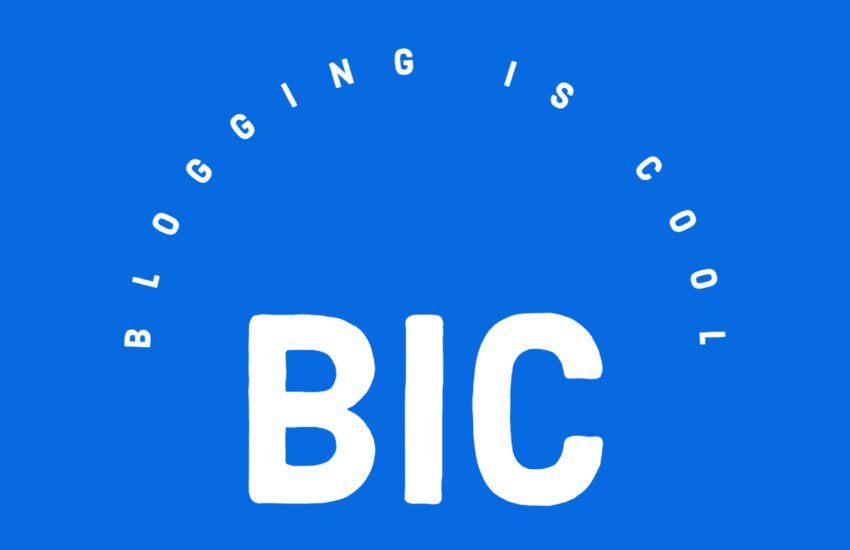Why and How to Check for Google’s Manual Actions on Your Blog
As a blog owner, it is crucial to ensure that your website is optimized for search engines and is visible to your target audience.
One factor that can affect your blog’s visibility is the presence of manual actions. Manual actions are penalties imposed by search engines, particularly Google, for violating their guidelines.
When a manual action is applied to your blog, it means that some or all of your website’s content will not appear in Google search results.
This can significantly impact your blog’s traffic and visibility, making it essential to regularly check for any manual actions against your blog.
- Reasons for Manual Actions
- How to check if there have been manual actions on your blog
- Conclusion
- Frequently Asked Questions
- 1. What are manual actions in the context of search engine optimization (SEO)?
- 2. Why is it essential to regularly check for manual actions against your blog?
- 3. How can you check for manual actions against your blog?
- 4. What types of issues can result in manual actions against a blog?
- 5. How do manual actions impact a blog’s search engine rankings and visibility?
- 6. What steps should you take if your blog receives a manual action penalty?
- 7. How long does it take to recover from a manual action penalty?
- 8. What are the consequences of ignoring manual action penalties?
- 9. How can you prevent manual actions against your blog in the future?
- 10. How often should you check for manual actions against your blog?
- 11. Are manual actions the only type of penalties that can affect a blog’s SEO performance?
- 12. How can you differentiate between manual actions and algorithmic penalties affecting your blog?
- 13. Can manual actions affect specific pages or sections of a blog, or do they apply to the entire site?
- 14. How can you monitor for manual actions against your blog proactively?
- 15. What are some common reasons why a blog might receive manual action penalties?
- 16. How can you recover from manual action penalties and restore your blog’s SEO performance?
- 17. How can manual actions impact a blog’s reputation and credibility?
- 18. Can manual actions against a blog be lifted automatically over time?
- 19. How frequently should you review and address manual actions against your blog?
- 20. What are some proactive measures you can take to avoid manual actions against your blog?
Reasons for Manual Actions
There are various reasons why your blog might receive a manual action. Some common examples include:
User-generated spam
If your blog has a significant amount of spammy or irrelevant user-generated content, Google may apply a manual action.
Structured data issues
If the structured data on your blog is incorrect or misleading, it can result in a manual action.
Unnatural links
Both inbound and outbound links that are deemed unnatural or manipulative can lead to a manual action.
Thin content
If your blog contains low-quality or shallow content, Google may penalize it with a manual action.
Hidden text
Hiding text on your blog with the intention of manipulating search engine rankings can result in a manual action.
How to check if there have been manual actions on your blog
To check for manual actions on your blog, it is advisable to use Google Search Console. This tool provides valuable insights into how your website is performing in search results and allows you to address any issues that may be affecting its visibility.
Here is a step-by-step guide to checking for manual actions in Google Search Console:
- Login to your Google Search Console account.
- Select the desired website property from the dashboard.
- Scroll down the sidebar navigation until you find the “Security & Manual Actions” section.
- Click on “Manual Actions.”
- If there are any manual actions against your blog, they will be listed here along with the specific issues that need to be addressed.
Once you have identified any manual actions, it is crucial to take the necessary steps to resolve them. This may involve removing spammy content, fixing structured data errors, disavowing unnatural links, improving the quality of your content, or removing hidden text.
Resolving manual actions can be a time-consuming process, but it is essential for restoring your blog’s visibility in search results.
Once you have addressed the issues, you can submit a reconsideration request to Google, explaining the steps you have taken to rectify the problems.
Regularly monitoring your blog for manual actions is an integral part of maintaining its search engine visibility. By staying proactive and addressing any issues promptly, you can ensure that your blog remains in good standing with search engines and continues to attract organic traffic from your target audience.
Conclusion
Checking for manual actions against your blog is crucial for maintaining its visibility in search results.
By using tools like Google Search Console and taking appropriate actions to address any penalties, you can ensure that your blog remains optimized and accessible to your target audience.
Frequently Asked Questions
1. What are manual actions in the context of search engine optimization (SEO)?
Manual actions are penalties imposed by search engines, such as Google, when they detect violations of their quality guidelines or manipulative SEO tactics on a website.
These penalties are applied manually by human reviewers and can negatively impact a site’s search engine rankings and visibility in search results.
2. Why is it essential to regularly check for manual actions against your blog?
Regularly checking for manual actions against your blog is crucial for several reasons:
– Identifying potential issues: Manual actions can indicate problems with your website’s SEO strategies, content quality, or compliance with search engine guidelines.
– Preventing traffic loss: Manual actions can result in significant drops in organic search traffic and visibility, potentially leading to loss of revenue and audience engagement.
– Maintaining search rankings: Addressing manual actions promptly can help mitigate their impact on your site’s search rankings and prevent long-term damage to your online presence.
– Ensuring compliance: Monitoring for manual actions helps ensure that your blog adheres to search engine guidelines and best practices, reducing the risk of future penalties.
3. How can you check for manual actions against your blog?
You can check for manual actions against your blog by following these steps:
– Use Google Search Console: Sign in to Google Search Console and navigate to the “Manual Actions” section to view any manual penalties applied to your site by Google.
– Monitor email notifications: Google may send email notifications to webmasters if manual actions are detected on their websites, providing details and instructions for resolving the issues.
– Regularly review site performance: Monitor changes in organic search traffic, rankings, and indexing status to identify potential signs of manual actions or algorithmic penalties.
4. What types of issues can result in manual actions against a blog?
Several types of issues can result in manual actions against a blog, including:
– Thin or low-quality content
– Keyword stuffing or cloaking
– Unnatural or manipulative link schemes
– User-generated spam or hacked content
– Structured data markup violations
– Malicious behavior or deceptive practices
Addressing these issues promptly and ensuring compliance with search engine guidelines can help prevent manual actions and maintain a healthy website presence.
5. How do manual actions impact a blog’s search engine rankings and visibility?
Manual actions can have a significant impact on a blog’s search engine rankings and visibility by:
– Lowering search result rankings: Websites with manual penalties may experience drops in rankings for affected keywords or pages, resulting in decreased organic search traffic.
– Deindexing pages: In severe cases, search engines may deindex or remove pages from their search results entirely, making them inaccessible to users.
– Limiting visibility: Manual actions can restrict a blog’s visibility in search results, reducing its chances of being discovered by potential visitors and customers.
6. What steps should you take if your blog receives a manual action penalty?
If your blog receives a manual action penalty, take the following steps to address the issue:
– Review the penalty details: Read the manual action notification carefully to understand the specific issues identified by the search engine and the affected pages or content.
– Identify and fix the issues: Take corrective actions to resolve the issues identified in the manual action notification, such as removing low-quality content, disavowing spammy links, or fixing structured data markup errors.
– Submit a reconsideration request: Once you’ve addressed the issues, submit a reconsideration request through Google Search Console to request a review of your site by Google’s manual review team.
– Follow best practices: After resolving the manual action, continue to follow SEO best practices and adhere to search engine guidelines to prevent future penalties and maintain a healthy website presence.
7. How long does it take to recover from a manual action penalty?
The time it takes to recover from a manual action penalty depends on various factors, including the severity of the penalty, the extent of the issues identified, and the effectiveness of your corrective actions.
In some cases, recovery can happen relatively quickly, especially for minor issues that are promptly addressed.
However, more severe penalties or complex issues may require more time and effort to resolve, and recovery could take weeks or even months.
8. What are the consequences of ignoring manual action penalties?
Ignoring manual action penalties can have serious consequences for your blog, including:
– Continued traffic loss: Ignoring penalties can lead to sustained drops in organic search traffic and visibility, resulting in loss of audience engagement and revenue.
– Further penalties: Search engines may impose additional penalties or algorithmic filters on your site if underlying issues are not addressed promptly, exacerbating the negative impact on your rankings and online presence.
– Damage to reputation: Persistent violations of search engine guidelines can damage your blog’s reputation and credibility with both users and search engines, making it harder to recover and regain trust.
9. How can you prevent manual actions against your blog in the future?
To prevent manual actions against your blog in the future, follow these best practices:
– Create high-quality, valuable content that meets the needs of your target audience.
– Avoid manipulative or deceptive SEO tactics, such as keyword stuffing, link schemes, or cloaking.
– Regularly monitor your site for security vulnerabilities, user-generated spam, or other issues that could trigger manual penalties.
– Stay informed about search engine guidelines and algorithm updates, and adjust your SEO strategies accordingly to maintain compliance.
– Conduct regular audits of your site’s content, links, and technical SEO factors to identify and address potential issues proactively.
10. How often should you check for manual actions against your blog?
It’s a good practice to check for manual actions against your blog regularly, ideally on a monthly or quarterly basis.
Regular monitoring allows you to identify and address any issues promptly, minimizing the impact on your site’s search rankings and visibility.
Additionally, stay vigilant for email notifications from search engines alerting you to manual actions or other potential issues that require attention.
11. Are manual actions the only type of penalties that can affect a blog’s SEO performance?
While manual actions are one type of penalty imposed directly by search engine reviewers, there are also algorithmic penalties that can impact a blog’s SEO performance.
These penalties are triggered automatically by search engine algorithms when they detect violations of quality guidelines or manipulative tactics.
Algorithmic penalties can result in drops in search rankings and traffic without any explicit notification from search engines.
12. How can you differentiate between manual actions and algorithmic penalties affecting your blog?
Differentiating between manual actions and algorithmic penalties affecting your blog can be challenging since both can lead to similar consequences, such as drops in search rankings and traffic.
However, manual actions are typically accompanied by a notification from the search engine, informing webmasters of specific issues identified and providing instructions for resolution.
In contrast, algorithmic penalties are not explicitly communicated and may require more extensive analysis and troubleshooting to identify and address.
13. Can manual actions affect specific pages or sections of a blog, or do they apply to the entire site?
Manual actions can affect specific pages, sections, or the entire site, depending on the nature and severity of the issues identified by search engine reviewers.
For example, a manual action may target individual pages with thin or low-quality content, spammy links, or structured data markup violations.
In contrast, more widespread violations, such as site-wide spam or deceptive practices, may result in penalties applied to the entire site.
14. How can you monitor for manual actions against your blog proactively?
To monitor for manual actions against your blog proactively, consider the following strategies:
– Set up email alerts: Configure notifications in Google Search Console to receive email alerts for manual actions or other critical issues detected on your site.
– Regularly check for notifications: Periodically log in to Google Search Console and review the Manual Actions report to check for any penalties or warnings applied to your site by search engines.
– Use third-party tools: Utilize third-party SEO tools or services that offer monitoring and alerting features for manual actions and other SEO-related issues, providing additional insights and coverage beyond Google Search Console.
15. What are some common reasons why a blog might receive manual action penalties?
Some common reasons why a blog might receive manual action penalties include:
– Thin or low-quality content that offers little value to users.
– Unnatural or manipulative link schemes designed to artificially inflate rankings.
– User-generated spam, such as comment spam or forum abuse.
– Cloaking or deceptive practices that present different content to users and search engines.
– Structured data markup violations, such as incorrect implementation or misleading schema markup.
– Hacked content or security vulnerabilities that compromise the integrity of the site.
16. How can you recover from manual action penalties and restore your blog’s SEO performance?
To recover from manual action penalties and restore your blog’s SEO performance, follow these steps:
– Identify and address the issues: Review the manual action notification and take corrective actions to resolve the issues identified by search engine reviewers.
– Submit a reconsideration request: Once you’ve addressed the issues, submit a reconsideration request through Google Search Console to request a review of your site by Google’s manual review team.
– Document your efforts: Provide detailed documentation or evidence of the changes you’ve made to address the manual action and demonstrate your commitment to compliance with search engine guidelines.
– Be patient and persistent: Recovery from manual action penalties can take time, so be patient and continue to monitor your site’s performance and search rankings while awaiting a response from search engines.
17. How can manual actions impact a blog’s reputation and credibility?
Manual actions can negatively impact a blog’s reputation and credibility by:
– Undermining trust: Manual actions indicate that a blog has violated search engine guidelines or engaged in manipulative tactics, eroding trust and credibility with both users and search engines.
– Harming brand perception: Penalties can tarnish a blog’s brand image and perception, leading to negative associations and reduced authority in its niche or industry.
– Diminishing user confidence: Visitors may perceive penalized blogs as less reliable or trustworthy sources of information, leading to decreased engagement, conversions, and referrals.
18. Can manual actions against a blog be lifted automatically over time?
Manual actions against a blog are typically not lifted automatically over time.
Instead, webmasters must address the underlying issues identified by search engine reviewers and submit a reconsideration request for manual review.
Only after search engine reviewers determine that the issues have been resolved and the site is in compliance with guidelines will the manual action be lifted.
19. How frequently should you review and address manual actions against your blog?
It’s advisable to review and address manual actions against your blog promptly as soon as you receive notifications or become aware of potential issues.
Regular monitoring and proactive management can help prevent further negative impacts on your site’s SEO performance and reputation.
20. What are some proactive measures you can take to avoid manual actions against your blog?
To avoid manual actions against your blog, consider implementing the following proactive measures:
– Follow search engine guidelines: Adhere to best practices and guidelines provided by search engines to ensure compliance with quality standards and avoid penalties.
– Focus on user experience: Prioritize creating high-quality, valuable content that meets the needs of your audience and provides a positive user experience.
– Monitor for issues regularly: Conduct regular audits and checks of your site for potential SEO issues, security vulnerabilities, or compliance violations.
– Stay informed: Keep abreast of industry news, algorithm updates, and changes in search engine policies to stay ahead of potential issues and adapt your strategies accordingly.


